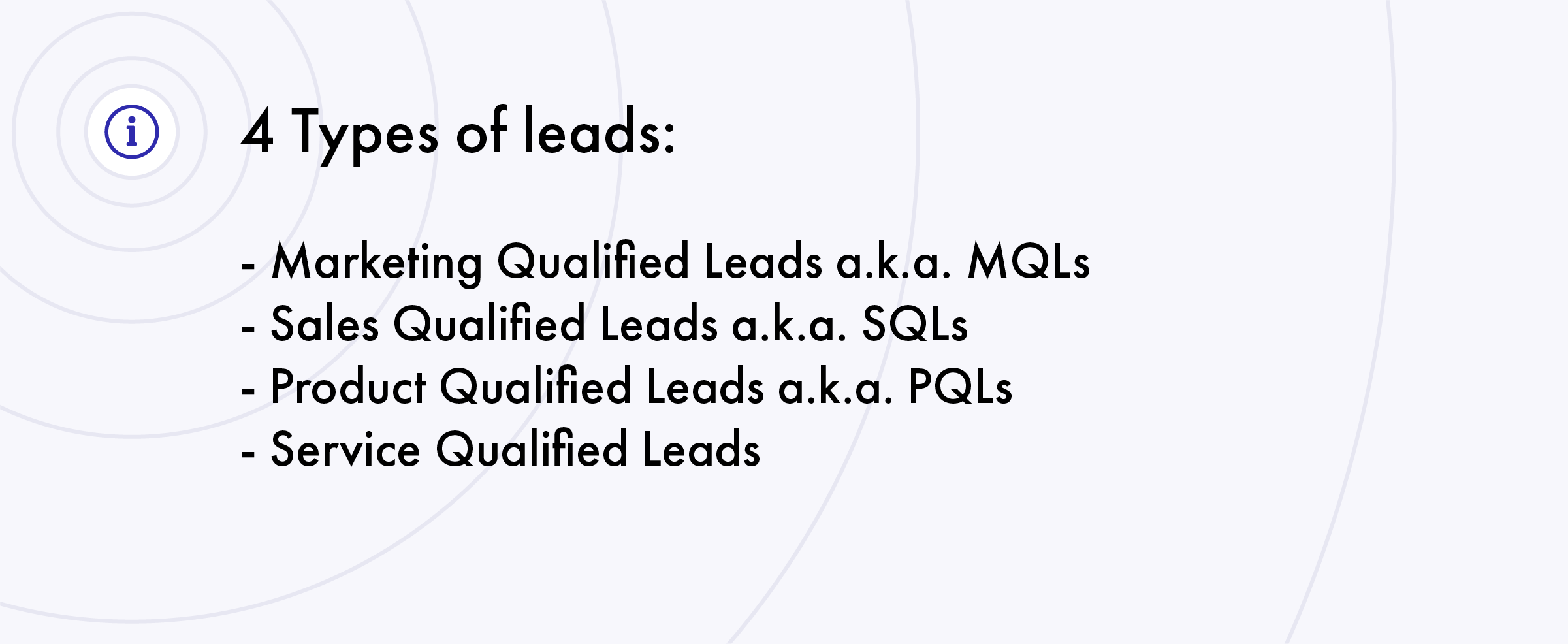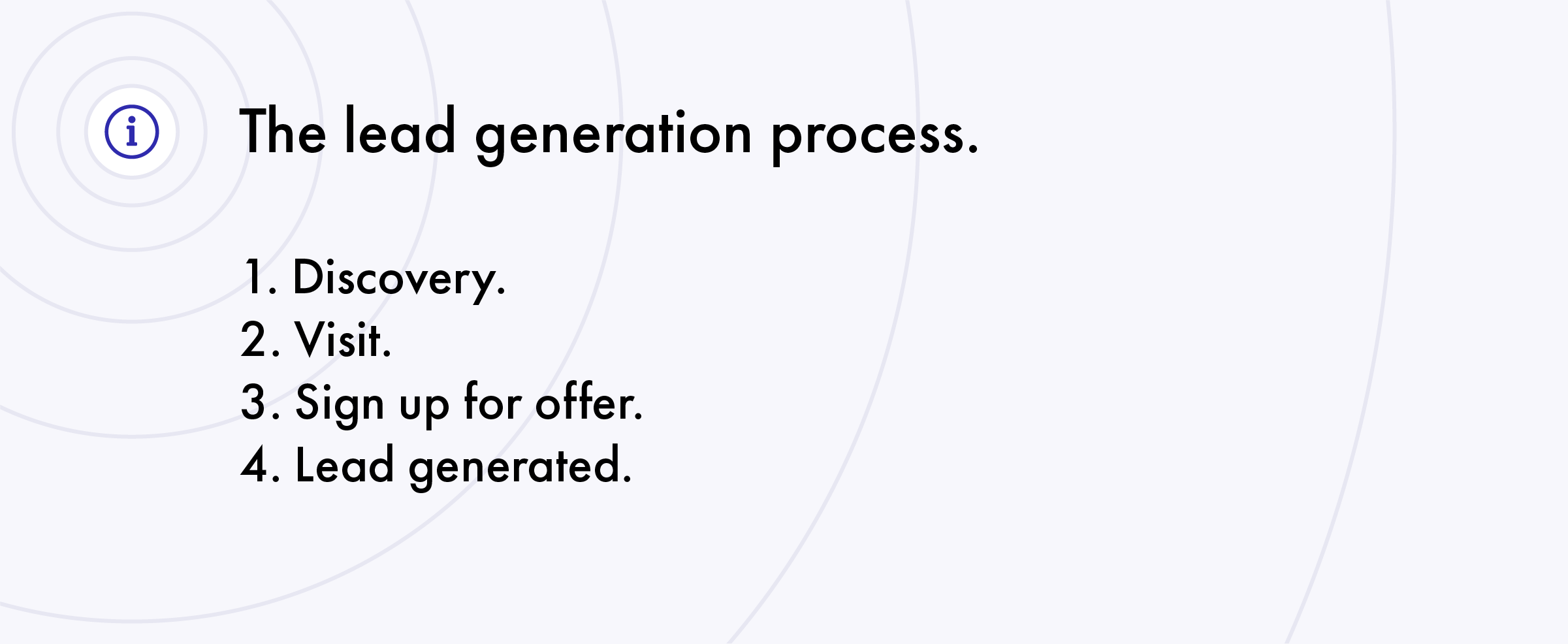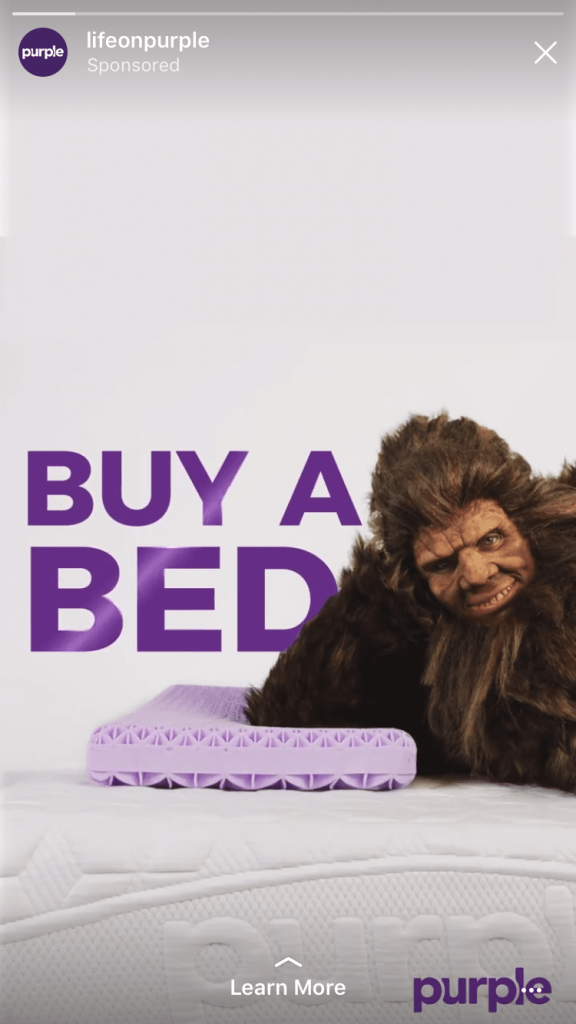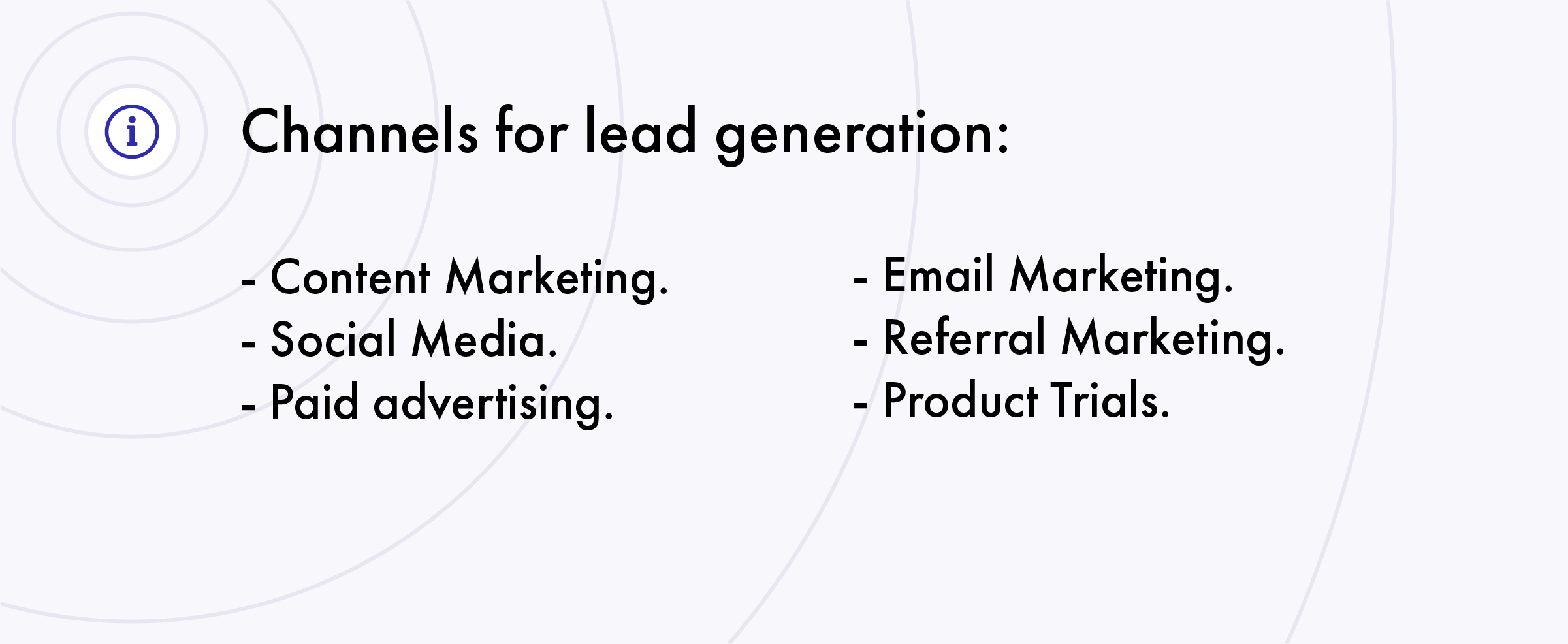Can you sell a product when no one is interested in it?
Can anyone be interested in a product if no one knows about it?
The answer to both questions is “No.”
Lead generation is always a hot topic among marketers. Since referral marketing is one of the best ways to capture leads for your business ( I explain why further down), in this article, we take a step back and take a look at lead generation from a beginner’s standpoint.
Don’t be mistaken. The contents of this blog post are not for beginners only.
Whether you’re a rookie or an experienced marketer, there are things to learn or refresh. I tried to include all of them. I may turn this article into a resource page dedicated to lead generation, so I’d like you to take the time to read it and let me know in the comments on what more you’d like me to include.
Enjoy!
What’s a lead and lead types.
The first thing we need to define is what the word “lead” refers to.
A lead is a person (or company) that expresses interest in buying a product/service from you.
A lead expresses their interest through sharing their contact info by signing up for one of your offers, or product trial. Their contact information could be an email address and name, or even more details (such as the company name, company size, etc.)
What is Lead Generation?
Lead generation is the process of acquiring the contact information of people that are interested in your products or services. It’s a marketing strategy for turning strangers to potential customers, and push them further down your marketing funnel.
Prelaunch campaigns are a great example of lead generation. If you’re planning to run a prelaunch campaign for your product, you should read the following articles:
- Prelaunch campaigns: How to do it right.
- A product prelaunch is much more than getting early adopters.
- Yac’s prelaunch campaign could change the way we work remotely – Case Study.
Depending on which step of your marketing funnel you acquired it, there are four types of leads:
- Marketing Qualified Leads, a.k.a. MQLs
- Sales Qualified Leads, a.k.a. SQLs
- Product Qualified Leads, a.k.a. PQLs
- Service Qualified Leads

Marketing Qualified Leads (MQL)
In general, MQLs are leads that interacted with your marketing material -whether they downloaded a pdf, subscribed to your newsletter list, or filled out a form to receive an offer/quote.
These types of leads sit on the top of your marketing funnel, and- most of the time, they are not ready to go through your sales process.
Your goal should be to nurture MQLs and turn them into SQLs.
Sales Qualified Leads (SQL)
SQLs are leads that took an action that indicates a direct interest in buying one of your products or services.
An SQL could be someone that booked a sales call with your sales team or someone who contacted your customer support to ask details about your product.
You should keep in mind that you’re the one who decided on the factors that differentiate the MQLs from the SQLs for your business.
e.g., On our template pages, we have two Calls-to-action:
- “Try for free”
- “Book a Demo”

When a visitor fills the form for booking a demo, they become an SQL for us. If they sign up for our trial, they become a PQL (Product Qualified Lead)
Product Qualified Leads (PQL)
This type of lead only exists if you offer a trial for your product or a freemium version of it with an option to upgrade to a paid plan.
The fact that someone decided to try your product, or use its free version, doesn’t make them a PQL. Again, you should define what specific action indicates the interest of such leads to become a paying customer.
For example, it could be an email that prompts people on trial to book a demo.
A PQL should be someone that belongs to the bottom of your marketing funnel; thus, they are very likely to buy from you. Make sure to define your indications accurately.
Service Qualified Leads
When I started my career in marketing, I worked for an agency as a consultant. I knew nothing about marketing, but I was good at making people believe that I knew about what I was talking to them about.
One of the first things I learned was from my friend- and now CEO of Viral Loops, Savvas Zortikis. He told me:
“You sell, they buy. When they become happy, you upsell.”
So, a Service Qualified Lead is an existing customer that expressed interest in buying an extended version of your services to reach their goals.
These people are happy customers, that not only reached a goal by using your product/service, but also believe that their business can evolve even further by using an extended version of your services.
Important Note:
More often than not, you’ll have to remind your customers about how successful the partnership between you has been.
For example, Viral Loops has a customer success team monitoring well-performing campaigns and contacting them. We also have a process of contacting people that run successful campaigns with Viral Loops to write a case study about them (which also creates a pipeline of content pieces that could potentially bring us more leads).
Why is lead generation important?
There are two types of people in this world:
- Those that (even once) imagined how nice it would be to find a briefcase full of money.
- Liars.
I don’t say that money is everything, but money is fuel, especially for business.
Whether you run a business for world peace or just driven by greed, you need the fuel. There’s no business without customers, and there are no customers without leads.
So, lead generation is essential first and foremost for making a business viable. But there’s also another hidden opportunity.
A lead may become a happy customer, and satisfied customers tend to become ambassadors. That means that a lead could generate another lead for you without lifting a finger for it.
The art for capturing leads.
Before getting started with generating leads, you must understand the “journey” of a stranger to becoming a lead.
The lead generation process.
- Discovery.
- Visit.
- Sign up for an offer.
- Lead generated.
It all starts with the stranger discovering you. The discovery could be through any of your online assets.
e.g., A blog post, a video, a social media post, an ad, etc.
In the second step of the journey, the stranger visits your landing page. Then, they sign up for an offer/trial/demo/download.
After the signup, you’ve successfully managed to turn a stranger to a potential customer.
The version of the journey I presented is just a plain version, and the reality is more complicated.
Just because someone finds you online, and you have a special offer, doesn’t mean that they will turn into a lead.
There are a couple of things that could go wrong:
- You target the wrong people.
- You use the wrong distribution channels.
- Your offer doesn’t provide a solution.
- Your landing page is ugly or confusing.
These are a few things you should consider before you even start spending time and resources in generating leads.

Now, let’s take a look at some channels that allows you to be discovered.
Channels for lead generation:
- Content Marketing.
- Social Media.
- Paid advertising.
- Email Marketing.
- Referral Marketing.
- Product Trials.
Content Marketing.
I bet you’re tired of hearing about how “content is king.” I know that I’m tired of it, but it’s true.
From the 1st week of Viral Loops to this day, our content is the #1 source of leads (Both MQLs & SQLs).
We try to create content that’s SEO-friendly, so most of the people discover us from organic search. Then we capture the contact info either by a form in the sidebar (look to the right of the text you’re reading right now)- turning visitors to MQLs, or with the ” Book a Demo” button on the menu bar at the upper right corner of our blog.

Social Media.
I think that almost all businesses are on social media, but only a handful of them do it right.
I know for sure that Viral Loops doesn’t do it properly, but it’s’s OK (for now!).
Using social media for lead generation is a much slower process, but it has vast potential.
In contrast with traditional content marketing (which aims to address a problem directly), social media is more focused on brand development. From the moment that most of the content on social media doesn’t directly solve a problem, the advantage is that it can make people resonate with your brand or even create a “need” for it.
Gary Vaynerchuck took social media by storm. By producing and distributing motivational content, he managed to create a cult following that had the “need” of even more life advice.
Hence, Gary sold hundreds of thousands of books.
Paid Advertising.
Titus Maccius Plautus, a poet and philosopher who lived from 254 BC to 184 BC, is probably the one that coined the phrase “You must spend money to make money.”
I used to disagree. But I changed my mind.
Why?
Just look at your organic engagement on Instagram. That’s why.
I’m not saying that it’s impossible to capture leads organically, but having a budget for advertising will speed up the process and allow you to test audiences, copies, landing pages, and offers.
If I put my money in only one type of ad, I would go with Instagram Story Ads.

With 61% of Instagram users using Stories to see what their friends are doing, it’s an excellent opportunity for you to be discovered.
Since Instagram is a highly visual medium, you should pay attention to the creative direction, or design, of your story ads. And again, be careful with your targeting. You don’t want to spend money on people that don’t care enough to become leads.
If you’re interested in using Instagram Story ads, make sure to read Wordstream’s guide.
Email Marketing.
Good-ol” email. Never fails to impress me.
In the last few years, engagement might be a bit down, but the leads coming from email marketing are always super hot.
For me, email is still the best way to nurture an MQL and turn it into an SQL. We include a ” Book a Demo” call-to-action in every email that we send. Some of us even have the call-to-action in our email signatures.

And it converts like crazy.
Referral Marketing.
Some times I wonder what’s left for me to say about referral marketing.
As I wrote a few paragraphs above, “A lead may become a happy customer, and happy customers tend to become ambassadors.”
Referral Marketing gives an extra incentive to happy customers to bring new leads by sharing about you with their network.
It works great for both prelaunch and post-launch companies, with companies like Robinhood, and Airbnb proving it.
Want to learn more about referral marketing? Read our in-depth guide.
Product Trials.
One thing is for sure; people who sign up for a product trial or a freemium version are closer to becoming a paying customer than a newsletter subscriber.
A trial version can give you an advantage against your competition since it allows people to test if your product is really for them.
It also allows you to showcase your company’s culture and your willingness to offer a solution.

Tools for Lead Generation.
Of course, if you want to go full-on with your lead generation efforts, you’ll need the right set of tools.
Below, I’m listing the tools that I’ve used throughout the years. Let me know in the comments if I should include anything else :)
For Content Marketing:
For Social Media Marketing.
For Paid Advertising.
For Email Marketing.
For Referral Marketing.
Before you go.
WOW! That was a long post.
The subject is crucial, as lead generation is one of the cornerstones of marketing. So, the goal is to renew it continually.
I hope that you learned something 🙂
Don’t forget to let me know in the comments if you believe that there’s something about lead generation that I forgot to mention.
Keep being awesome.
Apostle Mengoulis
Apostle is a core member of the founding team at Viral Loops. He has worked closely with hundreds of referral marketing campaigns made with Viral Loops. Apostle has years of experience in growing and marketing companies and co-founded Growth Hacking University.


2 comments
Hi, while reading this I can’t stop myself by saying this: “thank you”! I use this information now to show off to others LOL. Well nicely written Article
Do you offer paid service to come up with idea for pre-launch and do all the things? Thank you